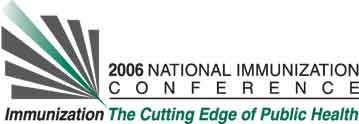Michael McNeil, Bacterial Vaccine Preventable Disease Branch, Epidemiology and Surveillance Division, National Immunization Program, Centers for Disease Control and Prevention, 1600 Clifton Road, NE, MS E61, Atlanta, GA, USA,
Susanne Pickering, Office of the Chief Science Officer/Immunization Safety Office, Centers for Disease Control and Prevention, 1600 Clifton Road, NE, MS E61, Atlanta, GA, USA, and Donna Rickert, National Immunization Program, Centers for Disease Control and Prevention, 1600 Clifton Road, NE, MS E-52, Atlanta, GA, USA.
Learning Objectives for this Presentation:
By the end of the presentation participants will be able to:
1. Describe healthcare providers' (HCPs) experiences with immunization, AEFI identification and reporting to VAERS.
2. List barriers to and facilitators of reporting to VAERS.
3. Describe HCPs sources of information about AEFI and VAERS.
Background:
The National Childhood Vaccine Injury Act of 1986 mandated HCPs report specified adverse events following immunization (AEFI). VAERS was established in part to address these requirements. However, some studies have indicated that a low percentage of HCPs were aware of these requirements or of VAERS. Because HCPs form the foundation of VAERS reporting, their knowledge of AEFI and reporting to VAERS is paramount.
Objectives:
1. Assess the knowledge, attitudes and beliefs of HCPs across occupations and practice areas.
2. Describe factors that influence HCP knowledge and use of VAERS and barriers to reporting.
Methods:
A stratified, nationally representative random sample of U.S. office-based HCPs across 3 occupational levels (physicians, mid-level HCPs and nurses) and 3 primary practice areas (pediatrics, family medicine and internal medicine) were surveyed utilizing Dillman design methodology. A total of 2,919 surveys were mailed with 1,607 completed for a 57% response rate.
Results:
HCP knowledge of VAERS varied by occupation and practice area (90% for pediatrics, 70% for family medicine, and 55% for internal medicine). About 40% of HCPs had identified at least 1 AEFI, only 18.7% indicated they had ever reported to VAERS. More serious AEFI were more likely to be reported and VIS were the most common source of learning about VAERS.
Conclusions:
As the number of recommended vaccines increase, the importance of HCPs knowledge of identification and reporting of AEFI, particularly serious events, is critical to assuring the safety of U.S. licensed vaccines. Although the majority of HCPs were aware of VAERS, recommendations are to increase knowledge across occupations and practice areas.
See more of Posters
See more of The 40th National Immunization Conference (NIC)

